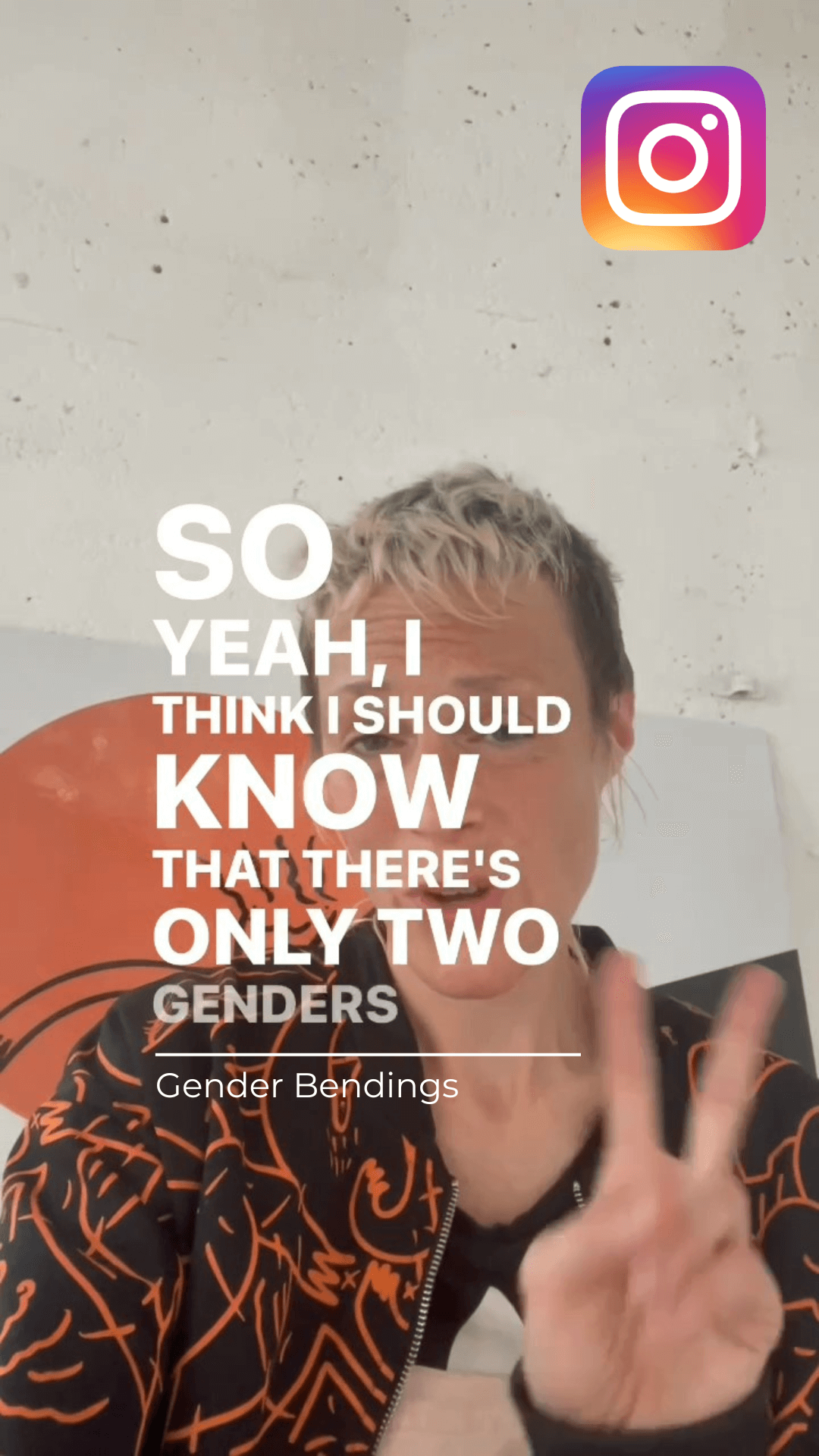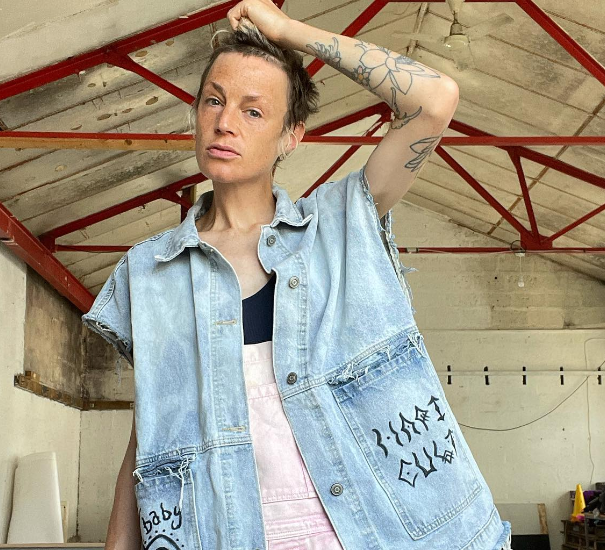- Published: June 8, 2022
- 9:36 am
Gender Dysphoria Explained
When talking about terms like gender dysphoria, it’s easy to imagine it’s a phrase dreamt up by the overlords of queer culture to describe fanciful metaphysical concepts that are too difficult or abstract to make sense in the ‘real’ world of mainstream society.
But that couldn’t be further from the truth!
To understand the definition of gender dysphoria, let’s first break the phrase down into the two very basic words that it consists of.
Word One: Gender
Now, this can be a little confusing itself as we delve deeper into concepts of gender, sex, trans, intersex and the full beautiful spectrum of human existence and identity. But for the purpose of this term, let’s just say it means:
The part of your identity assigned to you at birth that relates to whether you are male or female.
For most of us, we were assigned the gender identity of either girl or boy at birth, based on our perceived sex of either male or female.
Our perceived sex is based on our genitals and leads to us being assigned a gender identity that evolves with us as we grow – from boy or girl – into man or woman.

Genders come with expectations of how you will act in society; like what clothes you will wear, how outspoken you should be, and what roles you will play in your personal and work life.
That’s gender. Got it?
Great, now the next piece of the puzzle…
Word Two: Dysphoria
Hopefully as a standalone word, you begin to recognise it. Or did you think it was some form of leftist liberal alphabet army propaganda? No no, we’re far more creative than that, huns.
Dysphoria is a word already existing in the English language, with its own meaning and usage. It’s antonym, more widely known, is Euphoria. A term you may be far more familiar with.
Euphoria – is a feeling, or state, of very strong happiness, satisfaction, or excitement
Dysphoria – is a feeling, or state, of profound unease, discomfort, or dissatisfaction
Hmm – still perplexed?
Let’s look at the two words in the phrase again, now that we know what they mean.
Gender – the part of your identity that relates to whether you are male or female. This is usually assigned to us at birth, based on the medical institution’s perception of our genitals, and with it comes a set of expectations about our bodies, our actions and our roles in society.
Dysphoria – a profound sense of unease or dissatisfaction.
Combined, we can begin to understand gender dysphoria as a profound feeling of unease, or dissatisfaction, with the gender that was assigned to us at birth.
This may stem from an unease with the physical self, like our genitalia or gender-specific anatomy, or it can manifest with the norms and expectations that society puts on us based on our assigned birth-gender.
Gender dysphoria can be common within the LGBTQ+ community to varying degrees; we do not need to identify as trans, non-binary or intersex to experience such dysphoria. The very nature of society’s norms and expectations can create dysphoria within someone who feels they do not align perfectly within mainstream society.
Albeit that doesn’t mean it’s any easier for those of us who do experience gender dysphoria. Life can have a very different feel to it when gender dysphoria is something you experience.
Let’s explore common signs and symptoms of gender dysphoria.
Common Signs and Symptoms of Gender Dysphoria
Maybe you’re uncomfortable with the expectations that are placed on your gender.
Maybe you’re dissatisfied with the role that your gender is expected to play in society.
Perhaps it’s the clothing, behaviours, jobs, and interests assigned to your gender, or maybe it’s a feeling of discomfort and unease with your physical body – the way it’s perceived, or the way it feels for you to exist within it.
You may be feeling uncomfortable with people referring to you as your assigned gender (she/he sir/Madame miss/Mr) or experience depression and anxiety about how you are perceived.
You might feel a disconnection to peers, friends and colleagues who are assigned the same gender as you, a desire to change your name, pronouns and appearance, or feelings of discomfort with your secondary sex characteristics as your body develops.
As children, gender dysphoria can manifest in a strong rejection of toys, games, clothing and other things that are typically associated with your birth-assigned gender, and in adulthood it can affect how you wish to be seen at work and even what career choices you make.
People experiencing gender dysphoria are just as unique and individual as everyone else, and therefore there is no right or wrong way to manage these feelings.
There are many options for people experiencing gender dysphoria and having these feelings by no means excludes you from the potential to experience gender euphoria too (there’s that Euphoria word again!).
Gender Euphoria Explained
Strangely, the majority of society exists with gender euphoria – a feeling of comfort, satisfaction and connection to their assigned gender, and they don’t even realise. It isn’t discussed much because it is taken for granted by those experiencing it. Individuals experiencing gender euphoria rarely have considered an alternative, so they assume everyone feels this way too. Surely all men are happy to be men and all women are happy to be women, right?
Actually, they’re wrong.
Gender Dysphoria Diagnosis
As with any diagnosis, it can only be determined officially by a qualified healthcare professional. However, given the complex nature of gender, and the large misunderstanding across cis-het society of gender dysphoria, it has to be understood that not all healthcare professionals have adequate understanding of gender dysphoria.
The NHS’ formal guidance on gender dysphoria is available here. GP’s should support a route to diagnosis and treatment under their role as healthcare professional.
Talking to your GP is the important step, however it can be good to get advice and support from gender diverse organisations and support networks first. Using the experience of others who have been through the process, can help prepare you ahead of dialogues with your GP.
TransPlus is the first integrated Gender, Sexual Health and HIV service commissioned by NHS England, at the award winning 56 Dean Street in London. The team here are qualified to diagnose gender dysphoria and prescribe access to treatment, however the initiative is operating as a pilot and therefore only open to eligible individuals. Please see their website for the eligibility criteria.
There are a lot of paths to be considered, and it’s extremely important you take time to explore yourself and your gender identity, while using proper channels to diagnosis.
It can be quite a journey, and it can take time to find the right support for you, especially if you are neurodiverse or have other specific physical or mental health needs as well.
The Terrence Higgins Trust has put together an incredible list of resources, which you can access here.
Mermaids is a charity for transgender and gender diverse children, who offer support programs for children as well as their parents.
We’ve also supplied a list of other UK based LGBTQ+ or trans and gender diverse charities at the bottom of this article.
Most of these organisations will be happy to help even if you don’t identify as trans, non-binary or gender fluid – they are experienced at talking to and assisting people at all stages of their gender journey and giving unbiased help, advice and support.
Gender Dysphoria Support Networks
If you think you’re experiencing gender dysphoria, it’s important to acknowledge what you’re experiencing, and to begin talking about it with people you trust.
Finding a supportive community, educating yourself on gender and its many forms, and speaking to professionals such as gender psychologists and LGBTQIA+ charities and organisations, are all important steps to take as part of your gender exploration.
Gender exploration may lead us to discover ourselves as non-binary, trans, intersex or gender fluid.
We may choose to maintain our physical sex, but reject our assigned gender roles.
We may reject our assigned gender all together, changing our name, clothing and pronouns, but continue with our current physical sex.
Or, we may wish to alter our physical appearance, and transition using hormones and gender affirming surgeries.
Supporting Someone with Gender Dysphoria
If you are someone who does not experience gender dysphoria, but you are a strong ally and someone who cares for the trans, non-binary and intersex communities, then you can help by being a supportive friend, family member or loved one. Listening to and validating our experiences can go a long way in bridging gaps between us – as can continuing to educate yourself and helping to tackle the societal and political issues that can affect us.
Thank you for reading, together we can work towards creating gender euphoria for all!
Charities Available to Support You
Additional Trans & LGBTQ+ Charities available to support you:
If you’re feeling suicidal or in need of immediate support, the below charities are available to help you:
- Switchboard – LGBTQ+ Helpline, open 10:00 – 22:00 every day – call free on 0300 330 0630
Outside of hours: you can text ‘Switchboard’ to 85258, for free, which will direct you to a trained Shout Volunteer who will be aware you may need support around gender or sexual identity
- Samaritans – for everyone – call free on 116 123
- Shout – text service available 24/7 – text ‘Switchboard’ to 85258
- Childline – for anyone under 19 years old – call free on 0800 1111
- Silverline – a helpline for older people – call free on 0800 4 70 80 90

